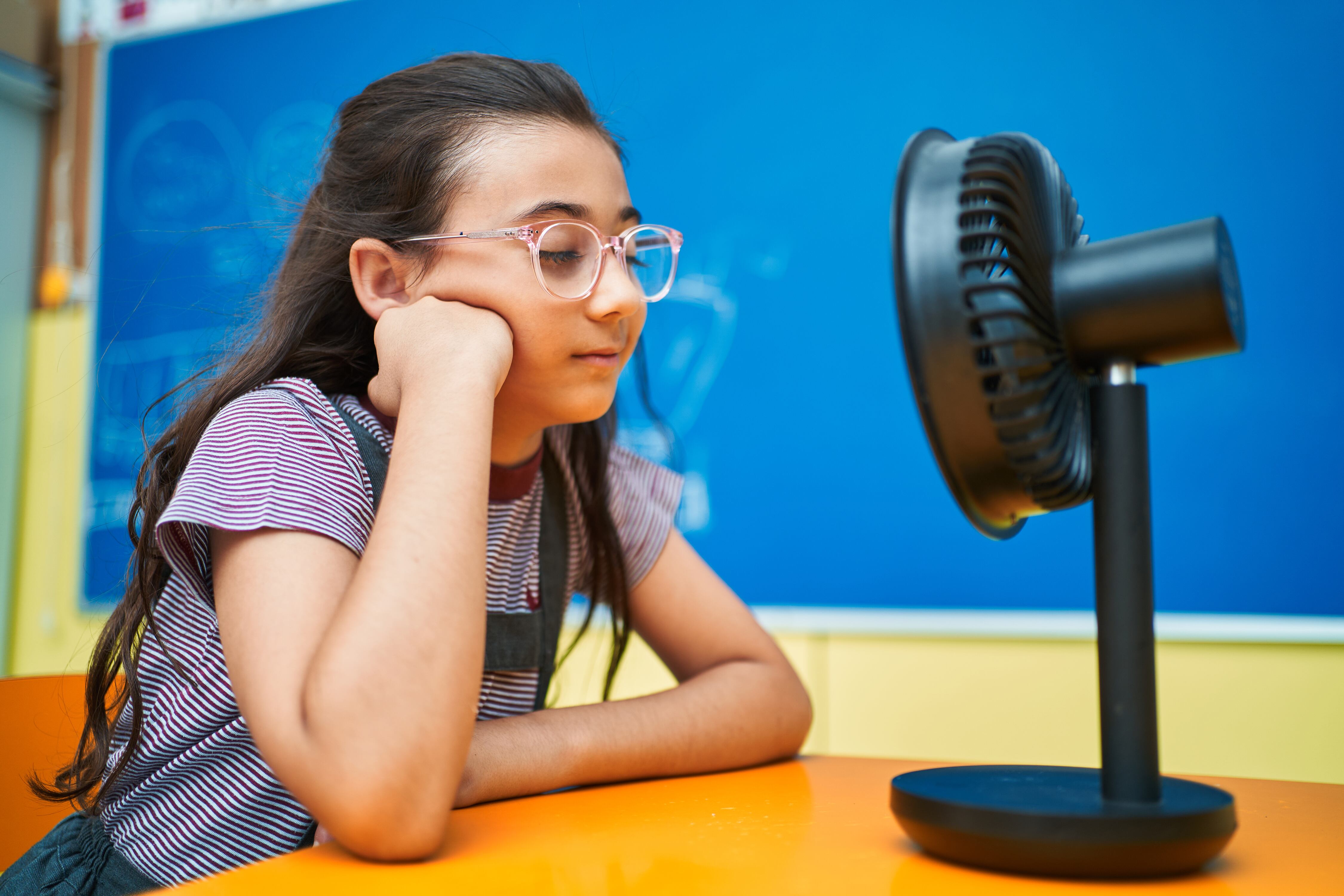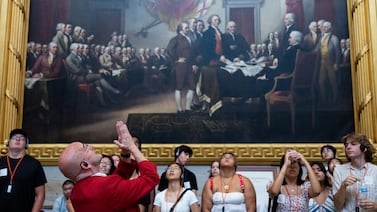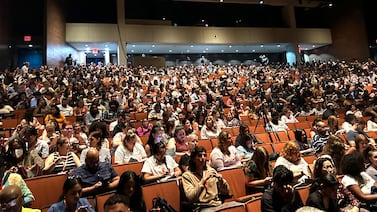This story was originally published by The 19th and is republished under a Creative Commons license. Sign up for The 19th’s newsletter here.
Angela Girol has been teaching fourth grade in Pittsburgh for over two decades. Over the years she’s noticed a change at her school: It’s getting hotter.
Some days temperatures reach 90 degrees Fahrenheit in her classroom, which, like many on the East Coast, isn’t air-conditioned. When it’s hot, she said, kids don’t eat, or drink enough water. “They end up in the nurse’s office, because they’re dizzy, they have a headache, their stomach hurts — all because of heat and dehydration,” she said.
To cope with the heat, her students are now allowed to keep water on their desks, but that presents its own challenges. “They’re constantly filling up water bottles, so I have to give them breaks during the day for that. And then everyone has to go to the bathroom all the time,” she said. “I’m losing instruction time.”
The effect extreme heat is having on schools and child care is starting to get the attention of policymakers and researchers. Last week, the Center for American Progress, a left-leaning think tank, published a report on the issue. In April, so did the Federation of American Scientists, a nonprofit policy organization.
“The average school building in the U.S. was built nearly 50 years ago,” said policy analyst Allie Schneider, co-author of the Center for American Progress report. “Schools and child care centers were built in areas that maybe 30 or 15 years ago didn’t require access to air-conditioning, or at least for a good portion of the year. Now we’re seeing that becoming a more pressing concern.” Students are also on campus during the hottest parts of the day. “It’s something that is really important not just to their physical health, but their learning outcomes,” she said.
Last April, the U.S. Environmental Protection Agency released its own report detailing some of the effects heat has on kids. It notes that children have a harder time thermo-regulating and take longer to produce sweat, making them more vulnerable than adults to heat exhaustion and heat illness.
Kids don’t necessarily listen to their body’s cues about heat, and might need an adult to remind them to drink water or not play outside. Kevin Toolan, a sixth-grade teacher in Long Island, New York, said having to constantly monitor heat safety distracts him from being able to teach. “The mindset is shifting to safety rather than instruction,” he said. “Those children don’t know how to handle it.” To keep the classroom cool, he’ll turn the lights off, but kids fall asleep. “They are lethargic,” he said.
To protect kids, schools have canceled classes because temperatures have gotten too high. Warmer temperatures also lead to more kids being absent from school, especially low-income students. And heat makes it harder to learn. One study from 2020 tracked the scores of students from schools without air-conditioning who took the PSAT exam at least twice. It found that increases in the average outdoor temperature corresponded with students making smaller gains on their retakes.
Both Toolan and Girol said that cooling options like keeping doors and windows open to promote cross ventilation are gone, thanks to the clampdowns in school security after 9/11 — and worsened by the threat of school shootings. Students and teachers are trapped in their overheating classrooms. “Teachers report leaving with migraines or signs of heat exhaustion,” said Toolan. “At 100 degrees, it is very uncomfortable. Your clothes are stuck to you.”
The Center for American Progress report joins a call by other advocacy groups to create federal guidance that schools and child care centers could adopt “to ensure that children are not forced to learn, play and exercise in dangerously hot conditions,” Schneider said. Some states already have standards in place, but they vary. In California, child care facilities are required to keep temperatures between 68 and 85 degrees. In Maryland, the recommendation is between 74 and 82 degrees. A few states, like Florida, require schools to reduce outdoor activity on high-heat days. Schneider says federal guidance would help all school districts use the latest scientific evidence to set protective standards.
Related: How can you learn if you just fainted? Why high-poverty school districts used COVID aid on buildings
In June, 23 health and education advocacy organizations signed a letter making a similar request of the Department of Education, asking for better guidance and coordination to protect kids. Some of their recommendations included publishing a plan that schools could adopt for dealing with high temperatures; encouraging states to direct more resources to providing air-conditioning in schools; and providing school districts with information on heat hazards.
“We know that school infrastructure is being overwhelmed by extreme heat, and that without a better system to advise schools on the types of practices they should be implementing, it’s going to be a little bit of the Wild West of actions being taken,” said Grace Wickerson, health equity policy manager at the Federation of American Scientists.
A longer term solution is upgrading school infrastructure, but the need for air conditioning is overwhelming. According to the Center for American Progress report, 36,000 schools nationwide don’t have adequate HVAC systems. By 2025, it estimates that installing or upgrading HVAC or other cooling systems will cost around $4.4 billion.
Some state or local governments are trying to address the heat issue. In June, the New York State Legislature passed a bill now awaiting the governor’s signature that would require school staff to take measures like closing blinds or turning off lights when temperatures reach 82 degrees inside a classroom. At 88 degrees, classes would be canceled. A bill introduced last year and currently before the California State Assembly would require schools to create extreme heat action plans that could include mandating hydration and rest breaks, or moving recess to cooler parts of the day.
Some teachers have been galvanized to take action, too. As president of the Patchogue-Medford Congress of Teachers, Toolan was part of an effort to secure $80 million for infrastructure upgrades through a bond vote. Over half will go to HVAC systems for some 500 classrooms in his district.
And Girol is running for a state representative seat in Pennsylvania, where a main plank in her platform is to fully fund public schools in order to pay for things like air conditioning. She was recently endorsed by the Climate Cabinet, a federal political action committee. “Part of the reason climate is so important to me is because of this issue,” she said. “I see how it’s negatively affecting my students.”







